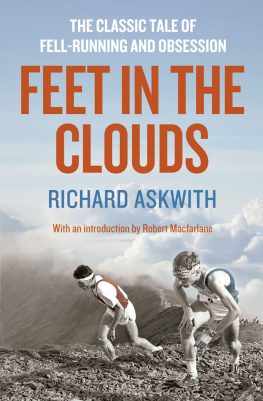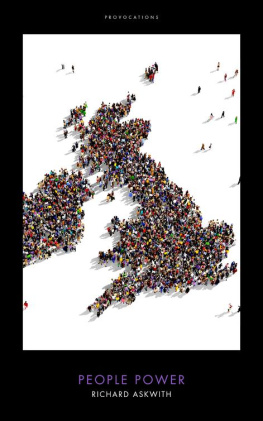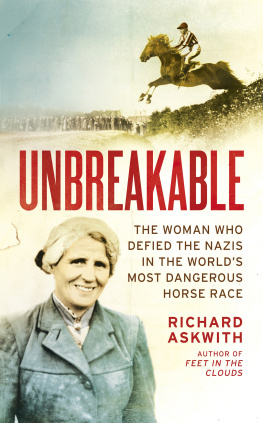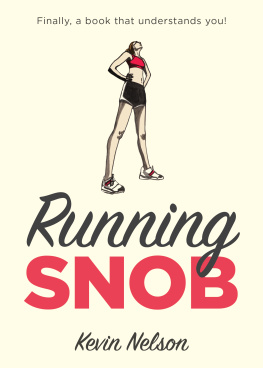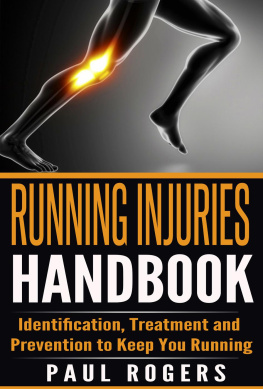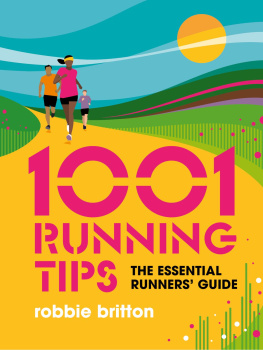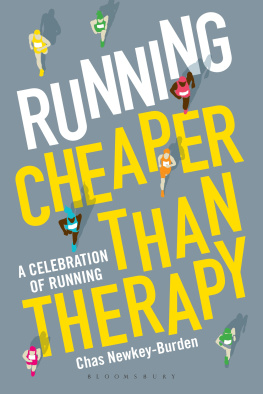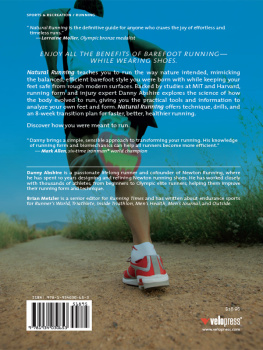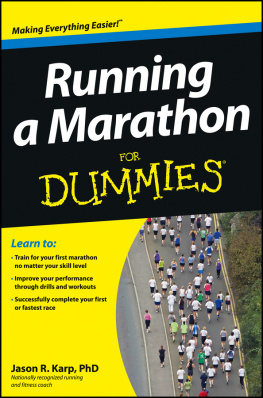
For Clare, Isobel and Edward

WARNING:
The activities described in this book are dangerous and may result in injury or death. Dont try them. Go to a gym instead, or stay at home and watch television.
Introduction by
Robert Macfarlane
Whenever I press yet another copy of Feet in the Clouds upon yet another friend, I try to explain why they should read it, even if they are as likely to take up fell-running themselves as they are to become cave-divers, Classical Mandarin scholars or astronauts. But explanation often proves difficult, because Feet in the Clouds is, like most great books, far too many things to be easily summarised. It is a wonderful evocation of the joys of running with like-minded friends in wildernesses; it is a detailed social history of a niche sport; it is a smartly told memoir of obsession and ageing; it is a personal story about how a pathetic, sybaritic yuppie set out to refine himself to whipcord, steel and grit; it is an exploration of pain and endurance, and how these keenly private experiences might be conveyed in language; it is an investigation of two major fault-lines of Britishness (between north and south, rural and urban). It is also frequently very funny, and sometimes beautiful, and several times moving. Above all and perhaps unexpectedly it is a study of heroes and heroism, which is why when I find that I have failed to explain to the person upon whom I am pressing the book all the reasons why they should read it, I tell them to imagine it as a cross between the Greek Myths, The Loneliness of the Long-Distance Runner and the Marvel Superhero comics.
For what gods populate these pages! The fell-runners we meet here are near-mythical in their stamina and their skills. There is Kenny Stuart, who could run on scree and the stones didnt even move; there is Ernest Dalzell, who flew down nine-tenths of a mile of hillside in under three minutes; there is Joss Naylor, who had half his back removed in an operation and twelve years later ran seventy-two peaks in twenty-four hours; there is John Atkinson, who could descend sixteen-foot precipices at a single bound, and once did a mid-air somersault, landed on his feet and just kept running. Not that these men give themselves the airs of gods, or lounge be-laurelled in their pantheon, of course. No, they are the most down-to-earth divinities you could imagine. When Bob Graham made his legendary round of the Lake District tops in 1932, he did so wearing a pyjama top and plimsolls and eating mainly boiled eggs.
There is something especially superhuman in their tolerance for pain. Reading Feet in the Clouds, you realise that fell-running has produced not only some of Britains most extraordinary athletes, but also some of its toughest individuals. Up on the fells, whingeing is unacceptable and fortitude indispensable. Askwith tells us of Peter Livesey, who broke both ankles in the course of a race, but still completed it; of Chris Gravina, who ran three-quarters of a Mountain Trial with a broken leg; of how, when Joss Naylor did all the Wainwrights (those 214 Lakeland peaks included in Alfred Wainwrights guides to the region) in a continuous push during one summer week at the age of fifty, he covered the distance of almost fifteen marathons laid end to end, he ascended and descended the equivalent of four Everests, he became so dehydrated that his tongue and mouth swelled until he could not eat or talk, and his ankles were rubbed clean through to the ligaments by his ill-fitting shoes. Few people have ever conquered themselves so completely, observes Askwith, or so utterly subdued the weaknesses of the flesh to the will of the spirit.
A book of heroes, then and a book of hero-worship, too. Askwiths admiration for the great fell-runners shines charmingly out of its pages. Bill Teasdale is one of Britains greatest-ever athletes; Billy Blands Bob Graham round time of 13 hours and 53 minutes is arguably the most extraordinary record in this or any other sport; Joss Naylor as hard a man as ever had a go at anything; Kenny Stuart is one of the very greatest of British athletes. Like all true sports fans, Askwith has a passion for stats feet climbed, miles covered, seconds and minutes shaved from records but like all true sports writers he also knows that stats are sawdust in the mouth of readers, and that what is needed to prove the extraordinariness of his subject is evocation rather than documentation.
So, of course, the experiences of his own fell-running years especially his attempts to complete the Bob Graham Round become the means by which he conveys his love of the sport and its people, and his body becomes the surface on which the mountains and their stories are scored, stored, scribed and harrowed. Literally, in fact: among the numerous injuries and mishaps he suffers is a bottom-slide while coming down Ben Nevis that earns me a set of gouges such as I havent seen since I was beaten at boarding school. Ha! As that earns suggests, these are the stripes of promotion rather than of punishment. They are tribal scars of belonging; evidence of his commitment to the sport, as well as to a broader ethos of living. For you need, he writes near the books end, to feel... nature, to interact with it; to be in it, not just looking from the outside. You need to lose yourself for it is then that you are most human.
And how well he writes about that interaction, and that sense of losing yourself. He conveys the thrill of moving fluently, at speed and length over remote country (dreams of the Spartans, dreams of the Masai); he catches at the exhilaration of honing ones motor-skills of balance and impact-control, the feel of tilt and push-off, slope and counter-slope; he captures the hurly-burly of wild weather at altitude; the serene beauties of evening runs, with the white moon glowing icily out of the deepening blue ahead and a sea of ancient Cumbrian twilight at his feet; he recalls the profound strangeness of a night run on Skiddaw, with shooting stars floating across the sky every few minutes, such that he seems to be racing through a dream. Joy is a word that recurs in this joyful book: the joy of being totally absorbed, as our ancestors were, in wild environments; the joy of throwing off the straitjackets of caution and civilisation; the joy of finding and pushing back limits; and, occasionally, the joy of doing things that one had thought impossible. The elite runners with whom Askwith meets in the books course are prodigious inspirations and generous teachers, for by its end he has acquired a fraction of their powers: down I fly... leaping and bouncing, joyfully, madly, hanging in the air longer than nature intended, my whole being singing with physical alertness.
Such high-flown writing cant be sustained for too long, of course, and Askwith is always quick to ground epiphany with bathos, and to freight passion with self-mockery. An intense aside about upland beauty is followed a few paragraphs later with advice about how to lance blackened toenails with a red-hot paper clip, resulting in a spectacular fountain of pus. Thats what a mountain is for: stretching your limits on, not pussy-footing around, he writes shortly after another discourse on beauty. A fascinating tussle emerges over the books course, in fact, between his instinct for beauty and his appetite for challenge and reward. The tension results most often in humour: You can enthuse all you like about the Lake Districts fresh air, its awe-inspiring views, its wildness. But I doubt that any of these things is ever really so uplifting to a mans spirits as the smell of a fresh Keswick pub at opening time. Im not sure he believes that, but its a good line nevertheless.
Next page
